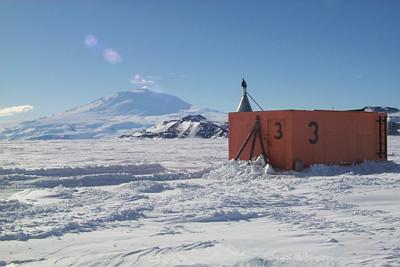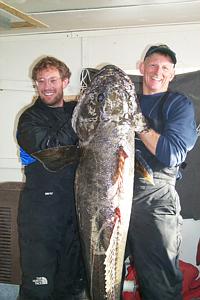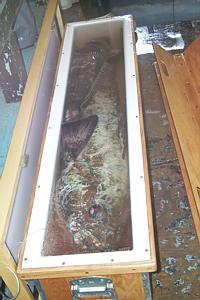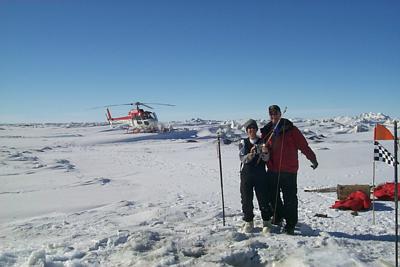1 December, 1999
A Fish Story
I have a real fish story for you today. This is about the fish known as
Antarctic Cod, a fish that lives only in these super cool Antarctic waters
and is not really a cod at all. This fish makes a protein called antifreeze
glycoprotein or AFGP for short. If you lived in these cold waters, you
really need this protein. The seawater here is super cooled and is usually
about -2 degrees Celsius. There is a research team here that is working on
developing an understanding of this protein, where it came from, why these
fish have the protein, and how it might have evolved. The story is great
and the evidence compelling. You will have to read the next journal to hear
about the research because this entry is more about fishing for the cod and
other species living in these waters because they have the AFGP protein.
Teri McClain is a biologist and the fisherperson who is in charge of
catching the fish needed for the research. If any of you are experienced in
ice fishing in the winter, this is the place for you. About three miles out
onto the ice at McMurdo Sound, a hole is drilled in the sea ice. The sea
ice is about three meters thick so Teri gets a crew to drill a hole in the
ice where she thinks the fish will be. Of course she has help from Dr. Art
DeVries who is the main PI doing the research. He has been fishing here for
35+ years and has a good idea where those cod like to hang out. One really
needs to guess correctly because a wrong guess gets you no fish and the need
to drill a new hole. You ice fisherpeople know what I am talking about.
While the fish is referred to as cod, it really is called Antarctic
toothfish with a scientific name of Dissostichus mawsoni. This fish belongs
to the family Nototheniidae. This family has about 49 different species and
32 of those live in the Southern Ocean. It lives near the bottom, is long
lived and grows very slowly. They also have some physiology that is unique.
They have no air bladder to make them buoyant, but they do have low-density
lipids and reduced calcium in their bones that help with neutral buoyancy.
Let's get back to fishing! I will include pictures of cutting the fishing
hole, catching the fish, transporting the fish in the "fish coffin" back to
the aquarium where their blood is takes for research, other organs are used
for tissue analysis and the meat is, you guessed it, taken to the galley for
dinner. When Teri goes fishing, she puts 5-7 large hooks (5 inches long) on
a cable that is ¾ inch in diameter. This is lowered through the hole down
about 200 meters to where the cod live near the bottom. The line is left
over night. When she returns to bring up the line, she usually invites
several people who want to go fishing. These people help pull up the fish,
get them off the hooks and into the fish coffin. Yesterday they caught 5
fish ranging in size from 27 lbs. to 110 lbs. The big one might be as old
as 60 years. There seem to be a lot of these fish because she always
catches them when the line is put down.
For thanksgiving dinner, in addition to the turkey, there is a tradition to
serve Antarctic cod here. It is really good! It does not taste like any
codfish that you might but in the store at home. There is no real fishy
flavor. It has a high oil content, tastes really rich and wonderful.

This is a picture of the drilling rig to make the fishing hole.

This is the Hut that is placed over the fishing hole so the fisherpeople have some protection from the weather when they are cheching the lines and pulling up the fish.

What did they find on the line? Just a huge 110 lb. mawsonii cod is all! Now you know why Teri gets help with fising.

Here is the fish coffin. Sea water and ice keep the fish alive and well as it is transported via truck to the aquarium. The box is heavy when empty. It is really heavy when filled with fish and water!

Here is Teri on the left with her fishing pole. She is now fishing for the smaller fish that live higher in the water column. If you ask "what can you do with a biology degree?", Teri will tell you that you can go fishing and have lots of fun.
Contact the TEA in the field at
.
If you cannot connect through your browser, copy the
TEA's e-mail address in the "To:" line of
your favorite e-mail package.
|
